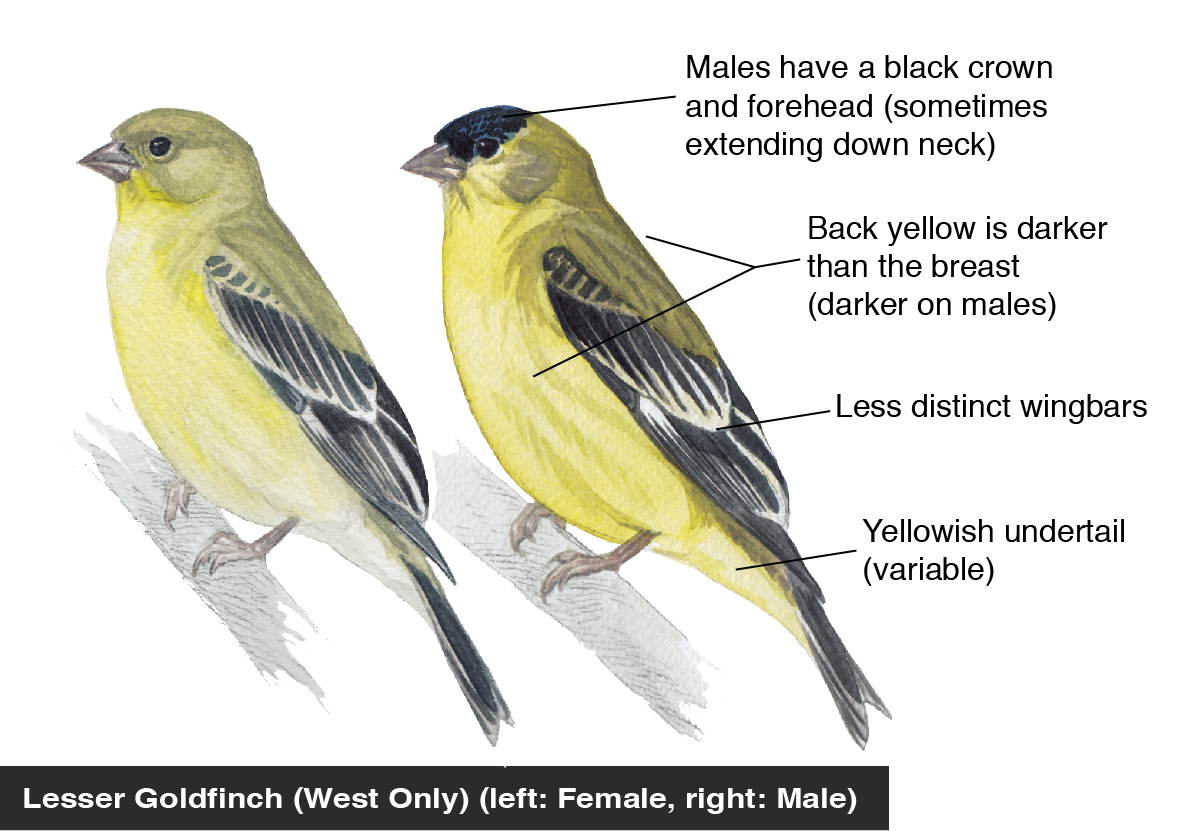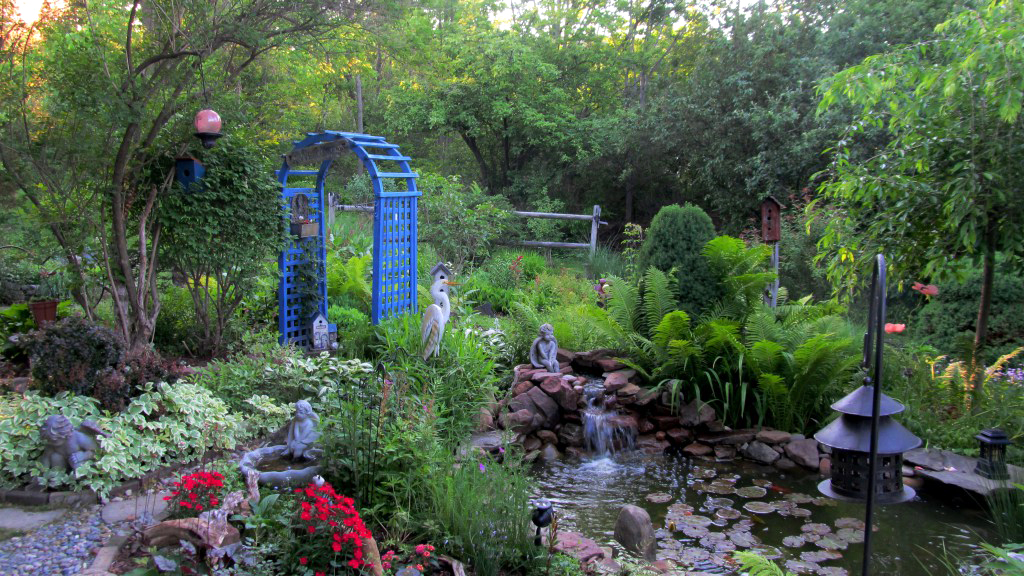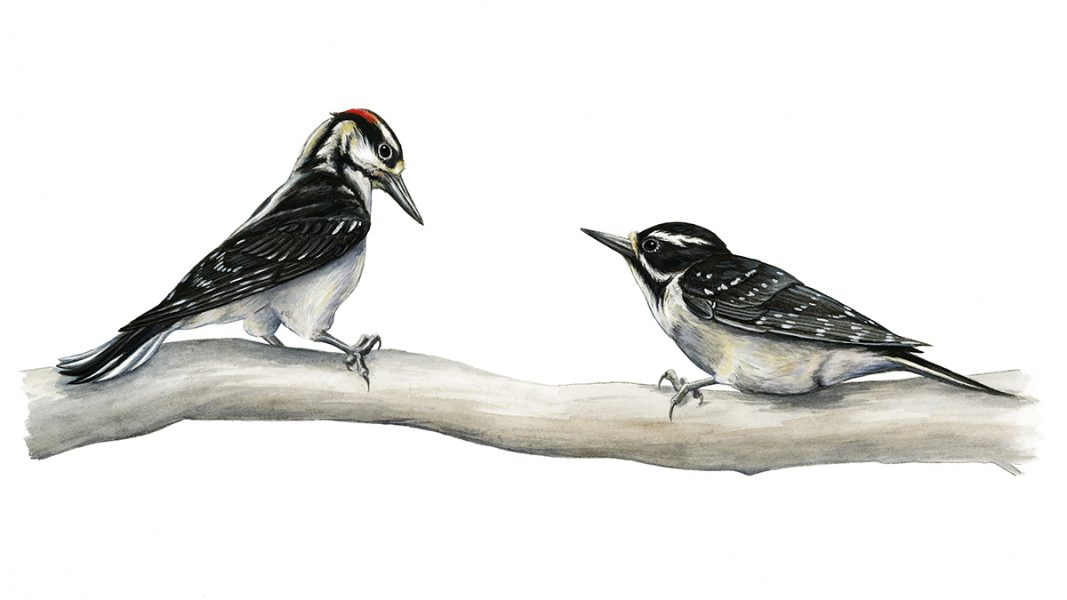Free Preview: Feeder Birds—Identification and Behavior
Get Your Feeder Bird Questions Answered
Enjoy this preview of content from the self-paced online course Feeder Birds: Identification and Behavior. Get a taste of the identification training, bird feeding best practices, and bird behavior interpretation this course has to offer.
1. How Can I Identify Birds at my Feeder?
Sorting out the Yellow Finches
Goldfinches are welcome bursts of color at feeders. The tricky part is that they come in all shades of yellow.



Time to Practice
Distinguishing the American Goldfinch from the Lesser Goldfinch is tricky, so here’s some extra practice. The American Goldfinch’s wingbars are sharper, its back and front are the same color, and its undertail is white, while the Lesser Goldfinch has a darker back than front and a yellowish undertail.
SnapID Challenge: Choose the American Goldfinch
2. How Can I Attract New Birds to my Feeder?
Seedeaters that Grab-and-Go
The birds who pick up seeds and fly off are a diverse lot with diverse foraging strategies in the wild. This foraging technique is favored by birds like chickadees, jays, and nuthatches, who need their feet to process seeds, and find it more convenient to do this at an offsite location. One of the other reasons birds will choose “take out” is if they tend to be displaced frequently by more-dominant feeder birds. For small birds like chickadees, titmice, and nuthatches, seeking some privacy can give them time to safely eat their dinner.
Black-capped Chickadee Take Out
Learn how and why chickadees process their food offsite.
How You Can Support Grab-and-Go Species

Making sure that there are trees and bushes near your feeders will help grab-and-go birds find the perches and cover they seek to enjoy their meals. It’s common to see birds waiting in the wings on low branches near feeders for their chance to swoop in and grab some seed. The more bird-friendly plantings you have in your yard, the more cover you’re providing for the birds coming to your feeder while attracting a more diverse set of species to your yard.
3. How Can I Interpret Bird Body Language?
Shape-Shifting to Appear Bigger or Smaller
 Hairy Woodpeckers: Aggressive posture on left, submissive posture on right
Hairy Woodpeckers: Aggressive posture on left, submissive posture on right
Hairy Woodpeckers are among the birds that use an upright posture to intimidate others. Standing tall, with the neck as long as possible and with the wings slightly spread, makes the bird’s whole body appear bigger. This upright motion can come and go in the blink of an eye, so next time you watch birds displacing each other at the feeder, see if you can spot the aggressor making its body look bigger beforehand.
You’ll also see Hairy Woodpeckers making themselves look smaller to signal submissiveness. You’ve probably observed people slumping their shoulders a bit when they want to avoid confrontation. Birds do something similar. They pull in their necks as far as possible and back away in the process.
Field Clip of Grackles Straining to be the Tallest
Watch as these Common Grackles get tall. Grackles use neck extensions in a ritualized way when they are in aggressive interactions with one another—it’s called the bill-up display.
Enroll in Feeder Birds: Identification and Behavior Now!
Thanks for previewing sample content from Feeder Birds: Identification and Behavior. There are more videos and practice tools like these to learn from in this self-paced course—plus text, image galleries, and diagrams—to help you dive in and get to know the birds that visit your feeders.
